My Serpae (or red minor tetras) seem to have white spots on them but each only seems to have one on their mouth or near there. Could someone identify if it is a disease or if it needs to be treated at all?
Tank size: 55 gallons
pH: 7.0
ammonia: 0
nitrite: 0
nitrate: 0
tank temp: 74 Degrees Farenheit
Fish Symptoms (include full description including lesion, color, location, fish behavior): Have one large white spot on or near their mouth. Some have ragged fins or white fins.They don't display anything wrong besides how they look. They seem to school together most of the time and their color is the same as it has been I believe. They've had these spots for over a month and they haven't spread it to my neon tetras or my corydoras.
Volume and Frequency of water changes: 20% every week.
Chemical Additives or Media in your tank: Seachem prime used for water treating.
Tank inhabitants: 4 Serpae Tetra (suspect) 5 Neon Tetra 2 Peppered Cory and 1 Albino Cory.
Recent additions to your tank (living or decoration): 1 Serpae tetra was added to the original 3.
Exposure to chemicals: Seachem prime
Digital photo :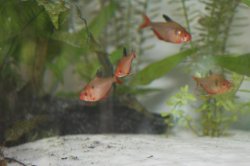
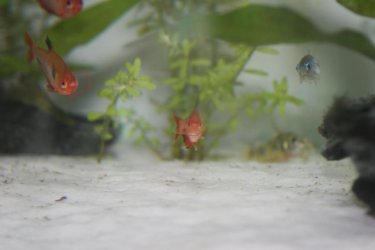
If those pictures aren't good enough, I can try to get a better one. Thanks for the help in advance!
Tank size: 55 gallons
pH: 7.0
ammonia: 0
nitrite: 0
nitrate: 0
tank temp: 74 Degrees Farenheit
Fish Symptoms (include full description including lesion, color, location, fish behavior): Have one large white spot on or near their mouth. Some have ragged fins or white fins.They don't display anything wrong besides how they look. They seem to school together most of the time and their color is the same as it has been I believe. They've had these spots for over a month and they haven't spread it to my neon tetras or my corydoras.
Volume and Frequency of water changes: 20% every week.
Chemical Additives or Media in your tank: Seachem prime used for water treating.
Tank inhabitants: 4 Serpae Tetra (suspect) 5 Neon Tetra 2 Peppered Cory and 1 Albino Cory.
Recent additions to your tank (living or decoration): 1 Serpae tetra was added to the original 3.
Exposure to chemicals: Seachem prime
Digital photo :


If those pictures aren't good enough, I can try to get a better one. Thanks for the help in advance!



 /www.aquarium-pond-answers.com/2009/07/fish-baths.html
/www.aquarium-pond-answers.com/2009/07/fish-baths.html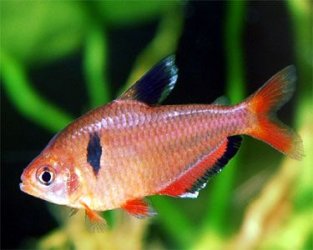
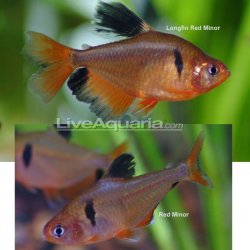
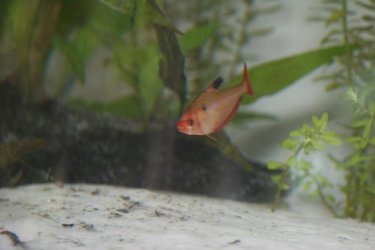
 Most of us aren't trained ichthyologists, and even if we were, we aren't pathologists or veterinarians either... so its a challenge, each and every time.
Most of us aren't trained ichthyologists, and even if we were, we aren't pathologists or veterinarians either... so its a challenge, each and every time.